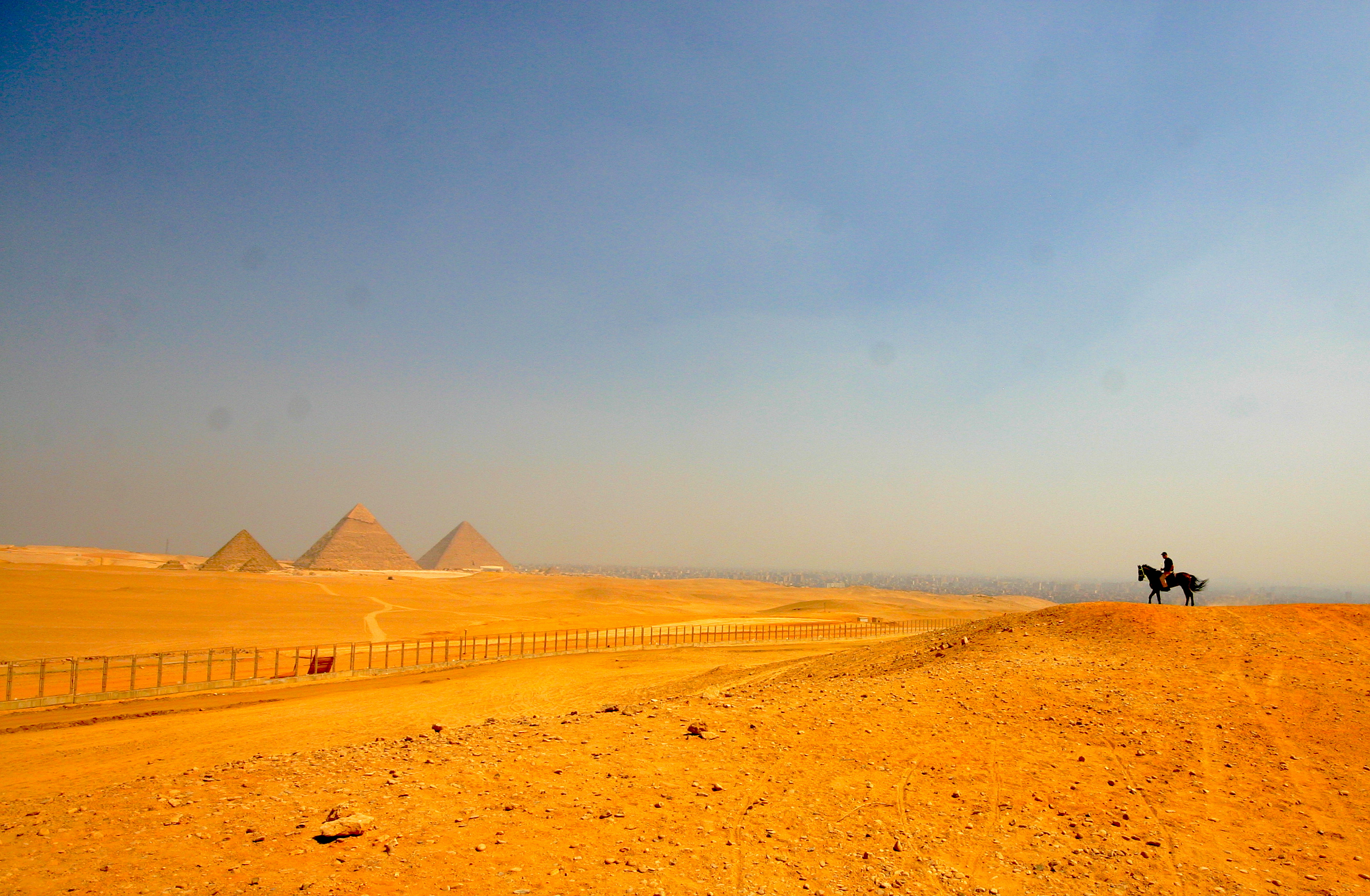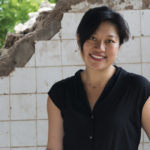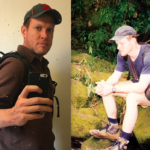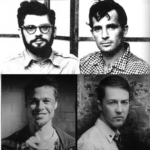By Robert D. Kaplan
Originally published in the January 2006 issue of the Columbia Journalism Review
(an excerpt)
Knowing the future is easy, if only we were willing to see the present. In the 1980s, it was one thing to learn about Afghanistan through fleeting and sporadic news reports; it was another to watch with a relative handful of journalists as Soviet planes and land mines killed ten times more Afghans than all the people killed in Lebanon — a war with which the major news organizations were then obsessed. It was one thing to watch CNN live as the Berlin Wall fell; it was another to hear about it in the then-Yugoslavia, a few hours after watching Albanians throw bottles at Serbian police. It was one thing to hear from academics in the early 1990s about post-cold-war Africa’s encouraging prospects; it was another to spend a day in Conakry, Guinea, searching for a photocopy machine that worked. The most dangerous thing a writer can do sometimes is to describe what he sees in front of his face, for the very ideals and assumptions that many of us live by are dependent upon maintaining a comfortable distance from the evidence.
The Internet now makes facts so effortless to obtain that there is the illusion of knowledge where none actually exists. With so many low-budget Web logs that do little more than emotionally react to the headlines, rare is the commentator who does the field work necessary to earn his opinions — or even his prejudices. And as punditry has crowded out the space once owned by print correspondents, the public is increasingly removed from the intangible essences and minutiae of distant places that explain the present, and thus forewarn of the future.
Above all, it is the lack of appreciation for geography in the broad, nineteenth-century sense of the word that is basic to an age of journalism increasingly given to summarizing from above rather than reporting from below. Good foreign correspondents in the print media are obvious exceptions to this rule. The New York Times correspondents Stephen Kinzer and Barry Bearak — the former writing from Turkey and Central Asia, the latter from Afghanistan and the Indian subcontinent, both in the late-1990s — come to mind for their vivid attention to local history and culture. And of course there are others. But such journalists constitute a mere handful among an ever-growing horde of self-proclaimed experts and generalizers who fill televised panels and print columns without ever having filled up a reporter’s notebook.
Out of the sea of kids emerged some recognizable types: the snooty ones (one pony-tailed girl pronounced the hotel’s revolving door “so ghetto” while applying her makeup in the lobby early on the first morning of the convention), the ones who giddily embraced their status as journalism nerds (“We suck at life, but we’re great at journalism,” read another girl’s sweatshirt), and lots of high achievers. But most of the students were white, and after spending four days talking with them, it seemed pretty clear to me that most came from upper-middle-class communities. Many of them, Chelsea and the others from Grady High School included, had paid around $500 in airfare, accommodations, and registration fees to attend. The convention’s organizers are trying to increase racial and economic diversity at the yearly conventions — they offer scholarships to local groups. But a trip with this high a price tag would be hard to swing for an out-of-town student on a tight budget.
Barry Lopez, the nature writer, notes that in the current climate even such a seemingly obvious notion as the American landscape is a concoction of the media and advertising industries: in truth, the American landscape is a product of many little landscapes, each with its local genius, so that only the ignorant would reduce “the Triassic reds of the Colorado Plateau . . . the sharp and ghostly light of the Florida Keys . . . and the aeolian soils of southern Minnesota” to a single geography. The valleys of Kentucky and West Virginia, Lopez goes on, should never be interchangeable; nor should the Green River in Utah and the Salmon River in Idaho. Contemporary journalism veers toward the very sort of canned assumptions and mediocre generalizations that Lopez abjures.
Journalism desperately needs a return to terrain, to the kind of firsthand, solitary discovery of local knowledge best associated with old-fashioned travel writing. Travel writing is more important than ever as a means to reveal the vivid reality of places that get lost in the elevator music of 24-hour media reports. In and of itself, travel writing is a low-rent occupation, best suited for the Sunday supplements. But it is also a deft vehicle for filling the void in serious journalism: for example, by rescuing such subjects as art, history, geography, and statecraft from the jargon and obscurantism of academia, for the best travel books have always been about something else. Mary McCarthy’s The Stones of Florence (1959) and Robert Byron’s The Station (1928) deal with the art of the Renaissance and the Byzantine empire respectively. Winston Churchill’s The River War (1899) and T.E. Lawrence’s Seven Pillars of Wisdom (1926) employ both the experience of travel and the study of geography to explore warfare and statecraft in late nineteenth-century Sudan in Churchill’s case, and the techniques of guerrilla insurgency in Lawrence’s. Owen Lattimore’s The Desert Road to Turkestan (1929) is on one level about the organization of camel caravans, and on another about Russian and Chinese imperial ambitions. Freya Stark’s The Southern Gates of Arabia (1936) is as good a depiction of Osama bin Laden’s tribal homeland of eastern Yemen as any you’ll find.
To wit, Stark writes of still-surviving caravan routes that obliterate borders, and of merchants in eastern Yemen who, “after a life of money-making, retire to an old age of guerrilla warfare in their valley.” Thus she is skeptical about whether the human race yearns for peace as much as it claims. For what people really believe — contrary to what they often tell journalists — takes time and effort to find out. She quotes a Yemeni who advises that while it is good to speak the truth, “it is better to know the truth and speak of palm trees.” Because the world is full of such men, Owen Lattimore, while traveling in Inner Mongolia, makes an observation that all journalists should take to heart:
There is nothing that shuts off the speech of simple men like the suspicion that they are being pumped for information: while if they get over the feeling of strangeness they will yarn as they do among themselves. Then in their talk there comes out the rich rough ore of what they themselves accept as the truth about their lives and beliefs, not spoiled in trying to refine it unskillfully by suiting the words to the listener.
Just listening to people, to their stories — rather than cutting them off to ask probing, impolite questions — forms the essence of these and all other good travel books. I learned this over two decades ago while trying to interview a refugee in Greece who had just escaped from Stalinist Albania. I had a list of questions to ask this refugee, but instead he preferred to tell me the story of his life. It was only after listening to him for several hours that the information I sought began to slip out.
But such a leisurely approach goes against the grain of journalism as it is commonly practiced. Reporting emphasizes the intrusive, tape-recorded interview; travel writing emphasizes the art of good conversation, and the experience of how it comes about in the first place. It has long been a cliché among correspondents that in Africa 10 percent of journalism is doing interviews, and 90 percent is the hassles and adventures of arranging them. But while the former fits within the narrow strictures of daily news articles, it is the latter that tells you so much more about the continent.
The travel writer knows that people are least themselves when being tape-recorded. You’ll never truly understand anybody by asking a direct question, especially someone you don’t know very well. Rather than interrogate strangers, which is essentially what reporters do, the travel writer gets to know people, and reveals them as they reveal themselves. After being with a battalion of marines for several weeks in Iraq, I noticed that they suddenly stopped using profane language when some journalists arrived and turned on their tape recorders. Whatever the marines were in front of the journalists, they were less real than they had been before.
Travel writing emphasizes solitariness. The best writing, literary or journalistic, occurs under the loneliest of circumstances, when a writer encounters the evidence firsthand without anyone of his social, economic, or professional group nearby to help him filter it, or otherwise condition his opinions. William Faulkner’s works, according to Malcolm Cowley, “are the books of a man who broods about literature, but doesn’t often discuss it with his friends; there is no ease about them, no feeling that they come from a background of taste refined by argument and of opinions held in common.” Officially, journalism encourages such independence of thought and experience. But while travel writing demands both a horizontal journey to another geographical space and a vertical journey outside of one’s own subculture of some duration, working journalists — having evolved into a professional caste — are subtly expected to do the opposite. They move from one seminar and conference and dinner gathering to the next, a pattern that promotes uniformity rather than diversity of outlook. Even when abroad, reporters are most comfortable hanging out together. They go to the same hotel bars and restaurants to such a degree that these places become emblematic of a particular era in reporting: famously the Commodore Hotel bar in Beirut in the 1980s. This engenders fond reminiscences, but not a variety of experience.
The best travel writing prepares you for what a place is really like, and consequently gives the reader who will never travel there an accurate ground-level portrait of it. Colin Thubron’s In Siberia (1999) provides a much more vibrant picture of the dissolution of rural Russia after the collapse of communism and the advent of Boris Yeltsin’s cold-turkey democracy than the Moscow-centric reporting in the most prestigious newspapers of the period. If one wants to know about how sub-Saharan Africa is actually doing, forget the newspapers and read Paul Theroux’s Dark Star Safari (2003), which demonstrates how finely wrought observations of people and landscapes offer the best kind of political and social analysis. Theroux describes bus and train stops, lawless borderlands, and urban nightmares, as well as individual beauty, honesty, and friendliness. Whatever the prejudices of Theroux and Thubron, at least they are the result of direct contact with the evidence — uncontaminated by contact with a clerisy of specialists, clustered in nearby foreign capitals. As Jack London put it, “They drew straight from the source, rejecting the material which filtered through other hands.”
Journalists belong to a policy elite that is fixated with politics to the exclusion of much else that goes on at home and abroad. Thus, when they arrive overseas they gravitate toward movers and shakers in foreign capitals who have similar fixations. For example, overseas reporters exhibit an obsession with covering elections. But because democracy has less to do with elections than with the building of institutions — a slow process that rarely translates into news events — a region like Africa would remain largely a blank were it not for travel books. Many dispatches counter this trend, but it is the trend that I am talking about, not the exceptions.
Travel books convey what is truly important about a society. Take Terence O’Donnell’s Garden of the Brave in War (1980) about Iran, in which he observes that in Farsi there is no word for either a romantic or a realist: “No Iranian would so limit his sense of the world by being one or the other.” The Puritanism of the ayatollahs, he further intimates, has been a reaction to the fact that deep down Iranians are all voluptuaries. Foreign correspondents, it is true, do write about this stuff — in books, for which they often have to take leaves of absence.
If anyone deserves a public service award for peeling back the curtain on distant societies, it is less the publishers of major newspapers and magazines than those of the Lonely Planet Guides and The Rough Guides. These two series combine historical and cultural depth with intrepid, solitary research by young travelers who get to every remote location in a given country; and in the course of informing the reader about where to stay and where to eat, say much about public health, crime, the economy, and politics in a society. In the 1990s, when it was particularly hard to get visas to Iran — and much of the information about that country emerged out of seminars in Washington — the best thing to read on the subject was Iran: A Travel Survival Kit by David St. Vincent, published in the Lonely Planet series.
What these guidebooks offer above all is geographical context, which is too often lacking in contemporary journalism. For example, how many people know that Abu Ghraib is not just a prison, but also a town west of Baghdad, with some of the worst random crime in Iraq? And that only part of the facility is used as a prison; the other part is a military base for, among other things, patrolling the crime-ridden area? How many know that one reason behind much of the violence in the Abu Ghraib-Fallujah area is its location to the west of Baghdad on the millennia-old trade route to Syria, thus encouraging a tendency for independence and smuggling?
Neither journalism nor travel writing are real subjects. Rather, they are only a means for communicating subjects that are real. Travel writers are increasingly aware of this, as travel books become a mechanism to explore everything from politics to wine, to archaeology, to the origin of color even: Victoria Finlay’s Color: A Natural History of the Palette (2002) is a marvelously innovative travel book. However, journalists have gone in the other direction, increasingly concerned about their own nonfield, with the press writing, studying, and in general fixated more and more on itself.
Reporting — one of history’s oldest professions, even as it has gone under different names — will survive and prosper, while “journalism” as a respected discipline threatens to dissolve into another branch of the entertainment industry. How will good reporting survive? Individual men and women will slip away from the crowd — away from the panels and seminars, the courses and conferences, away from the writers’ hangouts and e-mail networks — to cultivate loneliness. They will demand of themselves not to write a word about a place or a subject until they know it firsthand. And they will do this out of curiosity — for as the illusion of knowledge grows daily, the reality of places themselves becomes more of a mystery.






